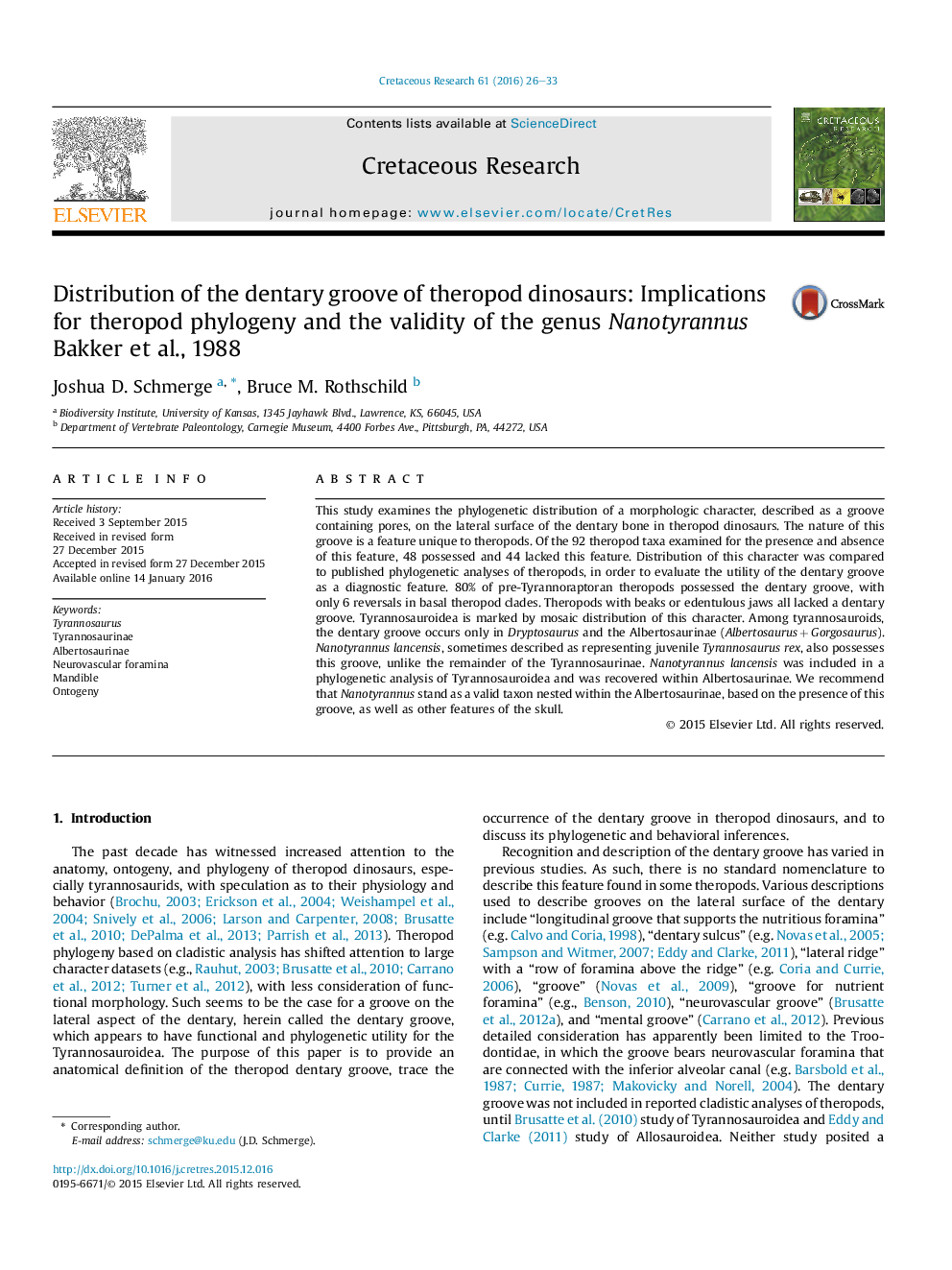| Article ID | Journal | Published Year | Pages | File Type |
|---|---|---|---|---|
| 4746722 | Cretaceous Research | 2016 | 8 Pages |
•Neurovascular grooves in the dentary characterize non-Tyrannoraptoran theropods.•The genus Nanotyrannus is not a juvenile Tyrannosaurus and is a distinct taxon.•Nanotyrannus is sister to the Albertosaurinae rather than the Tyrannosaurinae.
This study examines the phylogenetic distribution of a morphologic character, described as a groove containing pores, on the lateral surface of the dentary bone in theropod dinosaurs. The nature of this groove is a feature unique to theropods. Of the 92 theropod taxa examined for the presence and absence of this feature, 48 possessed and 44 lacked this feature. Distribution of this character was compared to published phylogenetic analyses of theropods, in order to evaluate the utility of the dentary groove as a diagnostic feature. 80% of pre-Tyrannoraptoran theropods possessed the dentary groove, with only 6 reversals in basal theropod clades. Theropods with beaks or edentulous jaws all lacked a dentary groove. Tyrannosauroidea is marked by mosaic distribution of this character. Among tyrannosauroids, the dentary groove occurs only in Dryptosaurus and the Albertosaurinae (Albertosaurus + Gorgosaurus). Nanotyrannus lancensis, sometimes described as representing juvenile Tyrannosaurus rex, also possesses this groove, unlike the remainder of the Tyrannosaurinae. Nanotyrannus lancensis was included in a phylogenetic analysis of Tyrannosauroidea and was recovered within Albertosaurinae. We recommend that Nanotyrannus stand as a valid taxon nested within the Albertosaurinae, based on the presence of this groove, as well as other features of the skull.
